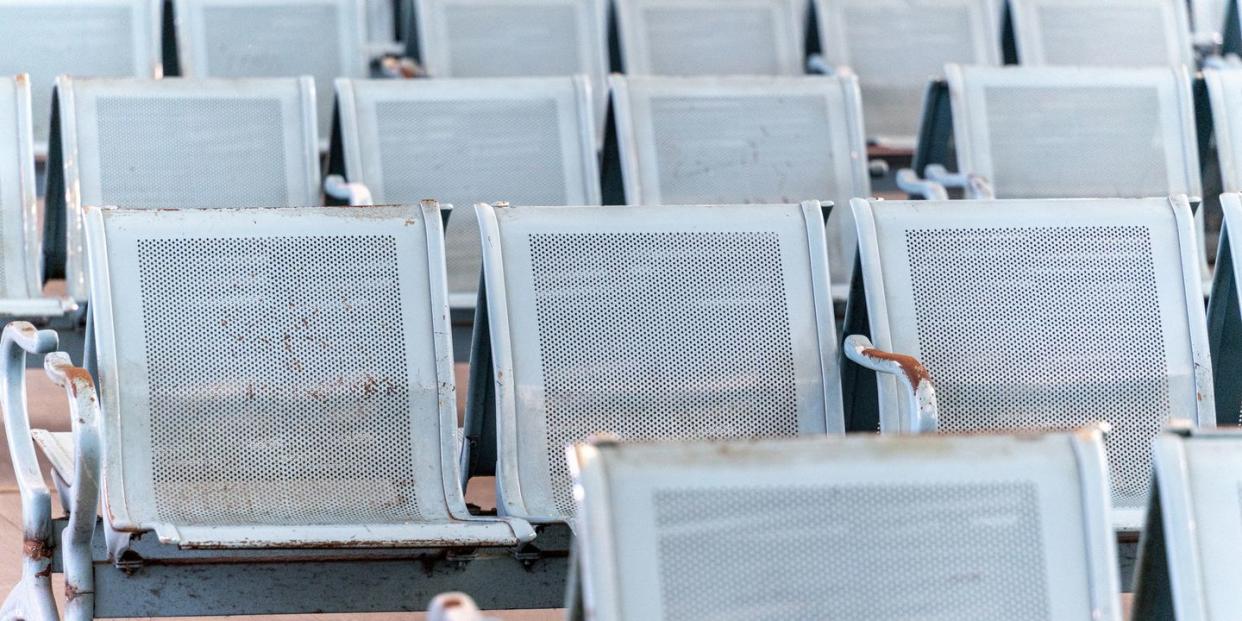You Can Use Vinegar and Baking Soda To Remove Rust

It's bound to happen every now and again: A bit of rust forms on your gardening tools or takes over on your favorite baking sheet. Or you find a gorgeous bar cart at the flea market, but it has rust spots on it. The good news: Rust doesn't have to be permanent so long as you take the right steps to get rid of these reddish-brown specks. Learn how to remove rust from metal, and you can restore anything pretty quickly.
"Rust is the common name for a very specific kind of corrosion that affects iron and its alloys," says Hubert Miles, a certified master inspector and the owner of Home Inspection Insider. In the presence of moisture and oxygen, iron reacts to form what's technically hydrated iron (III) oxide, he explains, which is the crumbly reddish-brown substance we call rust.
Common mistakes people make when removing rust include using chemicals that are too harsh, like hydrochloric acid and chlorine bleach, and not thoroughly cleaning and drying the metal surface after the rust is removed, which can lead to rust reappearing, Miles says. Also, steel wool is suitable for heavy-duty cleaning tasks but may not be the best choice for delicate or easily scratched surfaces, he explains.
If you've got a large-scale rust removal project on your hands, the task will likely call for a sander to remove, says contractor Jay Sanders, owner of Castle Dream Construction, a home remodeling company in Baltimore. He suggests beginning by using an orbital sander to remove the rust, making sure to go deep enough to remove the brownish-red stuff and paying close attention to corners and slim sides where rust can hide. Finish the job with fine-grit sandpaper to smooth any uneven areas, Sanders says.
If you've got a smaller item that you want to bring back to life and remove rust from, you can try an easy DIY process. We asked Willow Wright, owner of Urban Redeux Vintage in Alexandria, Virginia, to give us a 101 on how to remove rust from metal, a process she's well-versed in thanks to all the vintage and antique items she stocks in her store. Here's her go-to method to remove rust from a small metal object or a small area of a metal object:
How To Remove Rust From Metal
Wright's method requires scrubbing, but her homemade rust remover solution does most of the work for you.
The Supplies
Check your pantry; you probably have most of these items on hand.
White vinegar
Table salt
A container or large bowl to submerge the rusty object
Brush or sponge
Baking soda
Paint or rust inhibitor (optional)
The Process
The active time is very short, but the soak time takes several hours or overnight.
Prep Work:
Be cautious when working with vinegar as it has a strong odor and can cause irritation if it comes into contact with your eyes or skin. Make sure to work in a well-ventilated area and wear gloves, Wright recommends.
Step 1: Create a Rust-Removing Solution
Pour enough white vinegar into the container to fully submerge the rusty object. Add a generous amount of salt to the vinegar and stir until it dissolves. The exact proportions aren't critical. Just aim for a solution that's saturated with salt.
Step 2: Submerge the Rusty Object
Place the rusty object in the container, ensuring that it's completely submerged in the vinegar-and-salt solution. If the object's too large to submerge entirely, you can soak a cloth or paper towel in the solution and wrap it around the rusted area.
Step 3: Let It Soak
Allow the object to soak in the solution for several hours or overnight. This will give the vinegar and salt enough time to react with the rust and loosen its grip on the surface.
Step 4: Scrub Off the Rust
After soaking, take a metal brush or steel wool pad and scrub the rusted area vigorously. The combination of salt and vinegar should have loosened the rust, making it easier to remove. Continue scrubbing until the rust is gone or significantly reduced.
Step 5: Neutralize the Acid
Once you've removed the rust, rinse the object with clean water to remove any remaining vinegar-and-salt residue and place it back into the container with fresh water. Add two tablespoons of baking soda. The amount can vary depending on the volume of water, but approximately one cup per gallon is a general guideline. Mix the water and baking soda thoroughly, ensuring the baking soda is well dissolved. The baking soda will neutralize the acidity of the solution, reducing its corrosive properties. Let it soak for 10 to 15 minutes. Thoroughly dry the object to prevent any future rust formation.
Step 6: Apply a Protective Coating
To prevent future rusting, consider applying a protective coating, such as paint or a rust inhibitor, to the cleaned surface of the object.
You Might Also Like
